
13 minute read
Reconquering Mount Hermon during the Yom Kippur War by Z. Lev



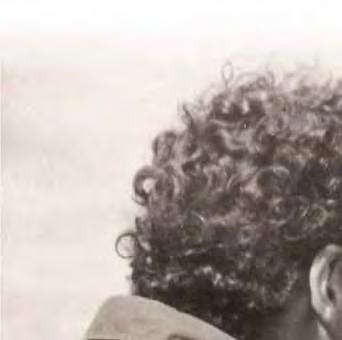


The war had been going for more than two weeks by the time Avi Alazari boarded the decrepit armored personnel carrier that would take him up to Mount Hermon. A member of the elite Golani Brigade’s Reconnaissance Battalion, Alazari had spent the better part of October 1973 desperately attempting to block the advancing Syrian forces on the Golan Heights.
The carnage was horrific. Alazari’s teammates fell like flies; by the end of the war, fully 10% of his

platoon would join the 3,000 IDF soldiers who gave up their lives for G-d and country. In what seemed like a never-ending effort, they battled overwhelming odds to push the four Syrian armored divisions out of Israeli territory.
“We were in the northern front for the entire war,” recalled Alazari in an interview with TJH. “We participated in all of the battles to halt the Syrians, including a series of extremely harsh battles.”
And yet, their heroic stand on the Golan Heights’

killing fields paled in importance to what they were about to embark on. It was time for Israel to take back Mount Hermon from the Syrians, and Elazri’s company was tapped to be the unit to do it.
Fifteen days earlier, the handful of Golani soldiers tasked with guarding Israel’s top-secret military base on Mount Hermon was awakened by the sound of approaching
By Z. Lev

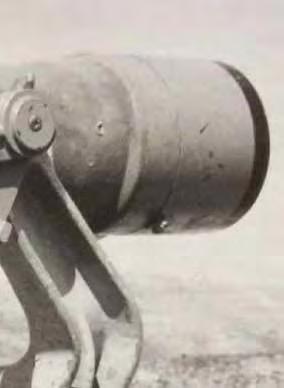
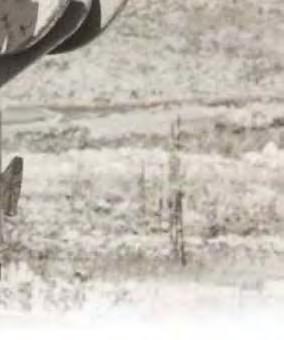



helicopters. Scrambling to their lookout points, the conscripts were stunned to witness four Soviet-built MI-8 helicopters landing atop the summit and disgorging hundreds of Syrian commandos. The date was October 5, 1973, and the Yom Kippur War had begun.
Nicknamed “the eyes and ears of Israel” due to the advanced spy gear atop the towering summit, the Mount Hermon base was and remains crucial to Israel’s security. The significant height advantage it afforded enabled IDF intelligence to easily intercept Syrian radio communications. Its highly advanced radar system could detect soldiers as far away as Damascus.
Recognizing the difficulty in quickly moving troops to the remote site, the Hermon base was designed to be impenetrable. With only one road accessing the summit, Syrian troops could expect a fusillade of hellish fire from above. Minefields surrounded the snow-covered mountain, and the base itself was protected by thick walls made of steel-reinforced concrete. In the event of trouble, the soldiers deployed atop the Hermon were instructed to lock themselves in a highly fortified tunnel until reinforcements would arrive.
However, the Hermon’s remote location and the misplaced Israeli belief that the Arabs wouldn’t dare attack after their humiliating defeat in 1967 left the post dangerously vulnerable. The base was staffed by only a few dozen soldiers, the majority of them intelligence specialists with no combat experience. The trench system designed to protect the soldiers from an aerial assault was incomplete, and a local Druze spy ring had mapped out the gaps in the minefields.
On that cold Yom Kippur morning, even fewer soldiers than usual were on duty as most of their comrades were on leave for the holiday. The 13 Golani soldiers who remained were no match for Syria’s 82nd Paratroop Battalion. Two-hundred enemy commandos landed on the summit, while another 150 made the punishing trek on foot from the Syrian border.
The IDF soldiers fought valiantly in a futile effort to save the Hermon from falling to the Syrians. After an intense firefight lasting for hours, the battle ended with the Syrian military firmly in command of “the eyes and ears of Israel.”
The loss of the Hermon was catastrophic. Not only did the Syrians overrun the base and capture its highly sensitive equipment, the interrogations of the Israeli POWs gleaned a trove of classified intelligence.
In one particularly well-known case, Amos Levinberg, a young officer, spilled so many secrets under interrogation that the damage he caused still echoes today. Possessing the highest possible security clearance, Levingberg “sang” before his captors, revealing for the first time that Israel was listening into all of Syria’s radio communications.
Losing the Hermon also caused a severe blow to morale, as it marked the first time that IDF officers surrendered to the enemy while their soldiers were still fighting. Thirteen Israeli soldiers were killed while another 27 were taken prisoner in what the IDF’s official historian later described as “the single most humiliating episode of the Yom Kippur War.”
“The fact that they occupied an outpost makes you feel humiliated,” recalled a Golani Brigade soldier who fought on the Hermon, “and your revenge is becomes an answer to your problems.” The assault on the Hermon was the opening shot in a joint Egyptian-Syrian surprise attack that caught Israel completely unprepared. Despite an abundance of early warnings, IDF intelligence failed to sound the alert, and Israel was in danger of being overrun only 26 years since its founding.
In the south, seven Egyptian armored divisions easily punched through the lightly-defended Bar Lev Line and retook the Suez Canal, killing over 1,000 IDF soldiers on the first day alone. The situation was even worse up north; an invading force of 1,400 Syrian tanks backed by more than 1,000 artillery pieces was met by only 170 tanks and 70 artillery platforms. Reinforcing the few Israeli troops were dozens of lightly armored reservists who had never trained to fight together as a homogenous unit.
Over the next two days, the IDF forces on the Golan Heights fought a suicidal battle in a desperate effort to buy time until the reserves could arrive. The 188th Armored Brigade, the unit tasked with protecting the Golan Heights from the Syrian military, was torn to pieces. Outnumbered by a ratio of 8 to 1, 90% of its soldiers were killed within the war’s first 48 hours.
For a while, it seemed that the Syrian military would succeed in conquering not only the Golan Heights, but the Galilee as well. The few reinforcements that rushed to the front were badly equipped and shellshocked; for a while, even the road to Haifa was open and Defense Minister Moshe Dayan warned of the looming “destruction of the Third Temple.”
Finally, Israel began to turn the tide. In a now-legendary effort to hold off the Syrians by Brigadier General Avigdor Kahalani, a ragtag collection of tanks down to their final bullets and operating on different radio frequencies caused the Syrians to retreat. Fresh troops sent to the Golan from the Sinai Desert then joined the fray, pushing the invaders back into Syrian territory.
Throughout the weeks of heavy fighting, the Hermon remained in Syrian hands. The effects were devastating; Syrian artillery exploited their newfound height advantage to rain unrelenting fire on Israeli troops fighting below.
“From the Hermon you can see all of the Golan spread out before you, and they bombarded us like rats in a cage,” Alazari recalled. “It was simply horrible. They had a ton of artillery and anytime we rested for a bit, we immediately received a horrible artillery barrage.”
With the IDF successfully mopping up the remaining Syrian forces on the Golan Heights, the IDF high brass decided that it was time to retake Mount Hermon. It was obvious who would be selected for this challenging mission; the Golani Brigade had been pressuring the military to allow them to storm the compound ever since they were
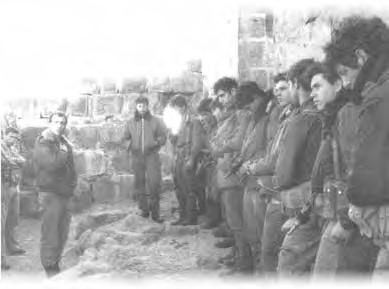
Golani soldiers reaching the Hermon outpost on October 22, 1973

Not all these brave soldiers made it back to their families
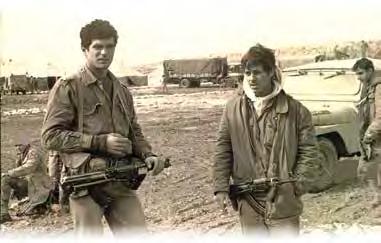
Members of Alazari’s unit
humiliated in the opening hours of the war.
The first attempt to conquer the Hermon went badly. The IDF mistakenly thought that there were still soldiers trapped on the Hermon outpost and, believing that time was of the essence, decided not to wait until nightfall to launch the attack. Climbing the steep mountain in broad daylight, the 150 Golani troops were exposed to Syrian gunners above.
The battle quickly turned into a bloodbath. The hasty counterattack ended in a humiliating defeat, with 23 IDF soldiers losing their lives in the battle. Lieutenant Colonel Ahmed Rifai al-Joju, the commander of the Syrian soldiers at the site, later told his captors that he was astonished at “the Israeli stupidity” to assault his position in broad daylight.
“I said this before and I’ll say it again. For the Syrians, the battle was simply a shooting gallery,” said Alazari. “They just kept shooting and shooting, and our forces were outnumbered and weren’t able to move. “
“After our battalion commander was killed. We got the order to retreat,” he continued. “I remember driving down the mountainside, our half-tracks loaded with the injured, and I’m trying desperately to help our medic to give them infusions….
“I sat there eating the horrible army food after that battle and said to myself, ‘That’s it. It can’t get more horrible than this,’” Alazari recalled. “But that was only the second day of the war. This was only the first taste of war. After the war really started, this was only the cherry on the top.” The Hermon would remain in Syrian hands for the next two weeks. On October 19, United States Secretary of State Henry Kissinger began pressuring Israel to agree to an immediate cease fire. Fearful that a cessation of hostilities would leave the strategically valuable Hermon in Syrian
hands, Defense Minister Moshe Dayan ordered Chief of Staff David “Dado” Eliezer to put retaking the mountain as his top priority.
As with the previous failed attempt to wrest control of the Hermon from Syria, it was clear that the Golani Brigade would take the lead. Joining them was the Paratroopers and the Sayeret Matkal special operations unit, which scouted out Syrian troop movements from a nearby hill.
“The ceasefire is close, and we need to work fast. The Hermon is the eyes of the country,” Golani Brigade Commander Amir Drori told his troops before setting off.
Unlike the first effort to retake the Hermon, the attack began at nightfall on October 21. The climb was arduous; the soldiers were forced to ascend more than 2,000 meters by foot in challenging terrain during pitch darkness. Adding to the difficulties was the lack of oxygen and the fact that the troops were exhausted after three weeks of fighting.
After hours of strenuous climbing, the soldiers were suddenly greeted by heavy incoming fire. The Syrian commandos had been lying in wait and opened up with everything they had on the tired Israeli attackers. Five out of the six tank commanders were killed instantly, along with the commander of the Golani Brigade’s reconnaissance company.
“We were in the half-track, and the brigade commander yelled at the battalion commander to jump out of the truck (to assist) or he’ll be forced to do it himself,” Alazari related. “The battalion commander jumped out and was dead before he hit the ground. They got him while he was in the air.”
A fierce battle erupted, with soldiers fighting at extremely short distances. The thin mountain air caused bullets to shatter their helmets as the
After the impossible was achieved



Amir Drori, the Golani Brigade commander
A memorial for soldiers from the Golani Brigade who were killed attempting to capture the Hermon
Golani Brigade pushed relentlessly forward. Golani soldiers who survived the difficult battle later described how the Syrians fought them at point blank range. Often, the two sides were so close that they were unable to use their weapons, resorting to their fists to vanquish their enemies.
“I remember sitting in one of the trenches and simply praying that I would lose a hand, lose a foot, an eye even, but that I leave this horror alive,” Alazari are. “You’re there for three weeks and people are getting killed the entire time. You think to yourself, maybe I’ll lose my hand but at least I won’t lose my life.
“It was horrible to be in this for three weeks when people around you are dying around you,” added Alazari. “You know that if you lost your hand, it’s bad, but you didn’t lose your life.”
Making the mission even more challenging was the fact that the Golani fighters were facing Syria’s top commando units.
“Ahmed Rifai al-Joju prepared his forces for this battle for six years,” said Alazari. “These people were experts. He trained them, and they became professionals in war. These weren’t 18-yearolds who only trained for eight months.”
At dawn, the tide began to turn. Syrian soldiers began fleeing, while others were taken prisoner. By 11 a.m., an IDF officer announced over the radio that the battle was finally over.
“The fighting went on throughout the night. But since Golani was very determined and never agreed to give up, when the sun rose, they saw that we made it to the top and they simply fled,” recounted Alazari. “They realized that the battle was over.”
The IDF suffered heavy losses. No less than 55 Golani Brigade soldiers were killed, out of an invading force of 400. Another 79 were wound
ed, while the Paratroopers suffered one dead and four wounded.
Despite the monumental losses of life, the mission was accomplished: Mount Hermon was reconquered and remains in Israeli hands until today.
The assault would go down as a one of the most legendary battles in Israeli history. The Golani Brigade, which was then and still is locked in a rivalry with the Paratroopers over prestige, adopted the firefight as a defining moment in its history.
From the first day of the war until the final battle on the Hermon, Golani never stopped fighting until the very last inch of Israeli territory was recaptured. Ever since then, raw recruits are made to climb the Hermon via the exact route taken by their forebearers in 1973 in order to receive their unit badge.
As for the survivors, they have invested immense efforts to remember their brothers in arms who fell during the bloody Yom Kippur War of 1973. Golani lost 130 soldiers in the Yom Kippur War, including 80 in the multiple attempts to retake the Hermon. From Alazari’s squadron of 20 people, only 12 made it back home alive at the end of the war.
“We were looking for the war and we were looking to contribute, do the maximum and win the battle and the war. We told the soldiers that in the Golani no one would dare not conquer Mount Hermon, because in the Golani there is no such thing as not carrying out the mission,” recalled former Golani commander Amir Drori in 2003.
“In this war, not everyone made it to the end. There were those who were given a mission and did not exactly perform it in the end. But in Golani, it did not happen.”










